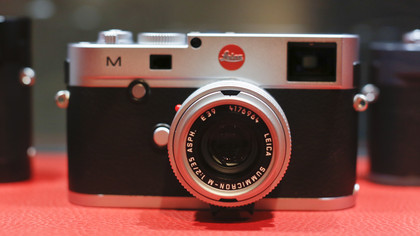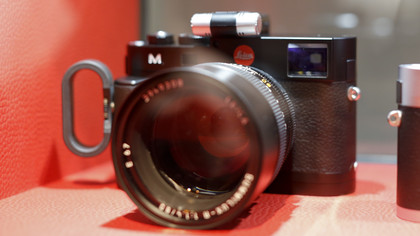TechRadar Verdict
Overall the Leica M 240 is an inspiring camera to use, from the design of the body to the feel of its controls. With its new sensor and processor it also performs extremely well, and produces images that match the body for quality. Its menu system isn't the slickest though.
Pros
- +
Classy raw files that are packed with information
- +
Lovely colour and contrast straight from the camera
- +
New rear screen is clear, bright and high resolution
- +
Pleasure-to-use body with first class lenses
- +
Live View makes longer lenses easier to use
Cons
- -
Exposure compensation button not always easy to use
- -
Level tool only useful for tripod users
- -
Menu could be easier and quicker to navigate
Why you can trust TechRadar
I don't think anyone could argue that Leica's first forays into interchangeable lens digital photography went quite to plan. The Digital Modul R, which was a 10-million-pixel back for the lovely R9 and R8 SLR bodies, was a good idea, but with a Kodak sensor that was full of silly mistakes it failed to take off when it was launched in 2004. It also cost somewhat more than the host bodies themselves.
The M8 was the company's first stab at creating a digital rangefinder, but with a similar sensor to that used in the Modul R, and no lessons learnt, it failed to produce the quality that Leica users, rightly, expected. It was also a little over-sensitive to infrared (as was the Modul R, though it went largely unreported), so users had to resort to the less than satisfactory solution of using IR cut-off filters over their lenses.

Since then we've had the M8.2, the M9, the M-E and the black-and-white-only Monochrom, as well as Leica's series of S medium format cameras. Each has (mostly) been an improvement on the last, as one would hope, and the new-fashioned M (Type 240) promises to be a more significant step again – from its specification sheet at least.
While the company has been catching up with the rest of the industry it hasn't made an allowance in its prices, and when you pay what you pay for a Leica body you really are entitled to expect something special.
Buying a camera that doesn't live up to our expectations is painful enough, but that pain is doubled or trebled when that camera costs as much as a Leica does – they make expensive lamentations that pride can keep unspoken for years.
Features
There are plenty of new features on this version of the M, and the most significant of those has to be the new sensor. It is some time since we had a chance to discuss the benefits of CMOS over CCD, as most brands switched to CMOS years ago, but this is Leica's first adventure with CMOS technology in an M body.
The obvious changes it brings are an ability to record video, and the streaming function required for the provision of Live View. The 24-million-pixel 'Leica Max' 36x24mm sensor outputs images of a maximum size of 5976x3992 pixels in DNG raw mode, slightly smaller in JPEG, and is, according to Leica, a design heavily influenced by the company's own engineers.
If this is the case, it is good news, as historically it was the components that Leica brought oven-ready from third parties that let its previous models down.
I'm still not sure how important video (HD or not) is to a Leica rangefinder user, but the introduction of Live View, with focus peaking and up to 10x zooming magnification, could make a massive difference to the Leica user's life.

Previously M models have had viewfinders designed to operate with a collection of specific focal lengths, as long and wide lenses need different magnifications in the viewfinder window so we can see what we are shooting.
With Live View, of course, all that is done away with, as we can see on the rear screen exactly what the lens is projecting – and that view will always fill the screen. We can also now use lenses from the Leica R 35mm film SLR system (via an adapter of course) and can focus them using peaking, and for the first time we can work in macro without having to guess focus or manually measure the camera-to-subject distance.
I now regret selling my old M bellows unit, which seemed at the time impossible to use. And now perhaps the door is open for mount adapter manufacturers to add Leica M bayonet to the range.
Despite the new sensor, the M's ISO range is a modest 200-6400, with ISO 100 as a 'pull' option. In practical terms the top ISO setting is about as high as most people will want to go, given that Leica lenses tend to have very wide maximum apertures, but on the other hand you might expect this kind of documentary camera to be operated in very low light.
The most visually impressive feature though is easily the new rear screen. Having suffered the ancient technology of the Monochrom's screen recently, the 920,000-dot, 3-inch panel on the M 240 makes a very welcome change – and a very significant improvement.